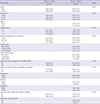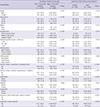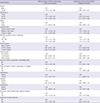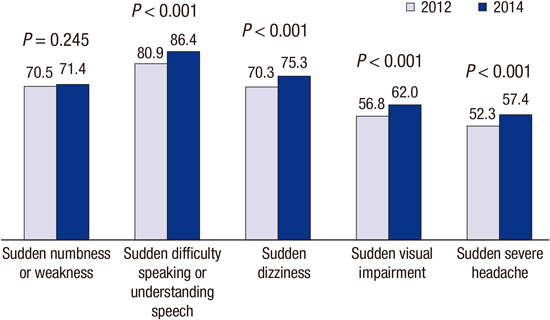2. Lee SW, Kim HC, Lee HS, Suh I. Thirty-year trends in mortality from cardiovascular diseases in Korea. Korean Circ J. 2015; 45:202–209.
3. Lee SW, Kim HC, Lee HS, Suh I. Thirty-year trends in mortality from cerebrovascular diseases in Korea. Korean Circ J. 2016; 46:507–514.
4. Gumbinger C, Reuter B, Stock C, Sauer T, Wiethölter H, Bruder I, Rode S, Kern R, Ringleb P, Hennerici MG, et al. Time to treatment with recombinant tissue plasminogen activator and outcome of stroke in clinical practice: retrospective analysis of hospital quality assurance data with comparison with results from randomised clinical trials. BMJ. 2014; 348:g3429.
5. Teuschl Y, Brainin M. Stroke education: discrepancies among factors influencing prehospital delay and stroke knowledge. Int J Stroke. 2010; 5:187–208.
6. Kim YS, Park SS, Bae HJ, Cho AH, Cho YJ, Han MK, Heo JH, Kang K, Kim DE, Kim HY, et al. Stroke awareness decreases prehospital delay after acute ischemic stroke in Korea. BMC Neurol. 2011; 11:2.
7. Brice JH, Griswell JK, Delbridge TR, Key CB. Stroke: from recognition by the public to management by emergency medical services. Prehosp Emerg Care. 2002; 6:99–106.
8. Pandian JD, Jaison A, Deepak SS, Kalra G, Shamsher S, Lincoln DJ, Abraham G. Public awareness of warning symptoms, risk factors, and treatment of stroke in northwest India. Stroke. 2005; 36:644–648.
9. Wahab KW, Okokhere PO, Ugheoke AJ, Oziegbe O, Asalu AF, Salami TA. Awareness of warning signs among suburban Nigerians at high risk for stroke is poor: a cross-sectional study. BMC Neurol. 2008; 8:18.
10. Kleindorfer D, Khoury J, Broderick JP, Rademacher E, Woo D, Flaherty ML, Alwell K, Moomaw CJ, Schneider A, Pancioli A, et al. Temporal trends in public awareness of stroke: warning signs, risk factors, and treatment. Stroke. 2009; 40:2502–2506.
11. Hickey A, O’Hanlon A, McGee H, Donnellan C, Shelley E, Horgan F, O’Neill D. Stroke awareness in the general population: knowledge of stroke risk factors and warning signs in older adults. BMC Geriatr. 2009; 9:35.
12. Bray JE, Johnson R, Trobbiani K, Mosley I, Lalor E, Cadilhac D; National Stroke Foundation. Australian public’s awareness of stroke warning signs improves after national multimedia campaigns. Stroke. 2013; 44:3540–3543.
13. Park BS, Lee JM, Koh SB, Kim BJ, Park MK, Park KW, Sin C, Lee DH. Ansan citizen’s knowledge of stroke. J Korean Neurol Assoc. 2002; 20:339–345.
14. Park MH, Jo SA, Jo I, Kim E, Eun SY, Han C, Park MK. No difference in stroke knowledge between Korean adherents to traditional and western medicine - the AGE study: an epidemiological study. BMC Public Health. 2006; 6:153.
15. Lee YH, Shin MH, Kweon SS, Choi JS, Park MS, Cho KH, Lim YS. Awareness of stroke warning signs and risk factors: result of a 2010 community survey in Gwangju Metropolitan City. J Korean Neurol Assoc. 2012; 30:26–32.
16. Kim YS, Park SS, Bae HJ, Heo JH, Kwon SU, Lee BC, Lee SH, Oh CW, Yoon BW. Public awareness of stroke in Korea: a population-based national survey. Stroke. 2012; 43:1146–1149.
17. Kim WJ, Ko Y, Park JH, Ban B, Han MK, Cho YJ, Bae HJ. Validation of five cardinal symptoms used for stroke awareness campaign. J Korean Neurol Assoc. 2013; 31:15–20.
18. Jones SP, Jenkinson AJ, Leathley MJ, Watkins CL. Stroke knowledge and awareness: an integrative review of the evidence. Age Ageing. 2010; 39:11–22.
19. Mochari-Greenberger H, Towfighi A, Mosca L. National women’s knowledge of stroke warning signs, overall and by race/ethnic group. Stroke. 2014; 45:1180–1182.
20. Kim J, Hwang YH, Kim JT, Choi NC, Kang SY, Cha JK, Ha YS, Shin DI, Kim S, Lim BH. Establishment of government-initiated comprehensive stroke centers for acute ischemic stroke management in South Korea. Stroke. 2014; 45:2391–2396.
21. Nicol MB, Thrift AG. Knowledge of risk factors and warning signs of stroke. Vasc Health Risk Manag. 2005; 1:137–147.
22. Schneider AT, Pancioli AM, Khoury JC, Rademacher E, Tuchfarber A, Miller R, Woo D, Kissela B, Broderick JP. Trends in community knowledge of the warning signs and risk factors for stroke. JAMA. 2003; 289:343–346.
23. Sug Yoon S, Heller RF, Levi C, Wiggers J, Fitzgerald PE. Knowledge of stroke risk factors, warning symptoms, and treatment among an Australian urban population. Stroke. 2001; 32:1926–1930.










 PDF
PDF ePub
ePub Citation
Citation Print
Print




 XML Download
XML Download